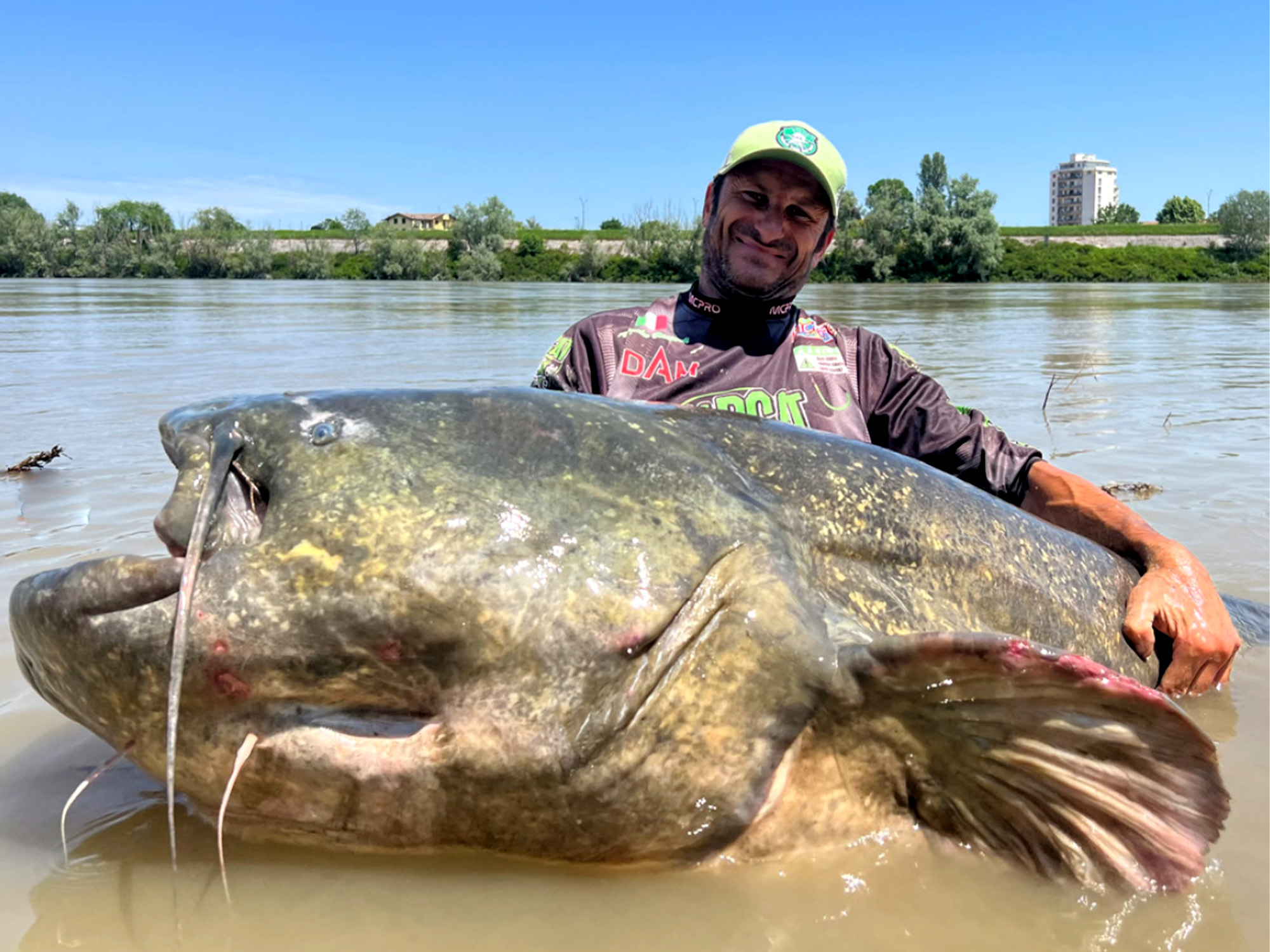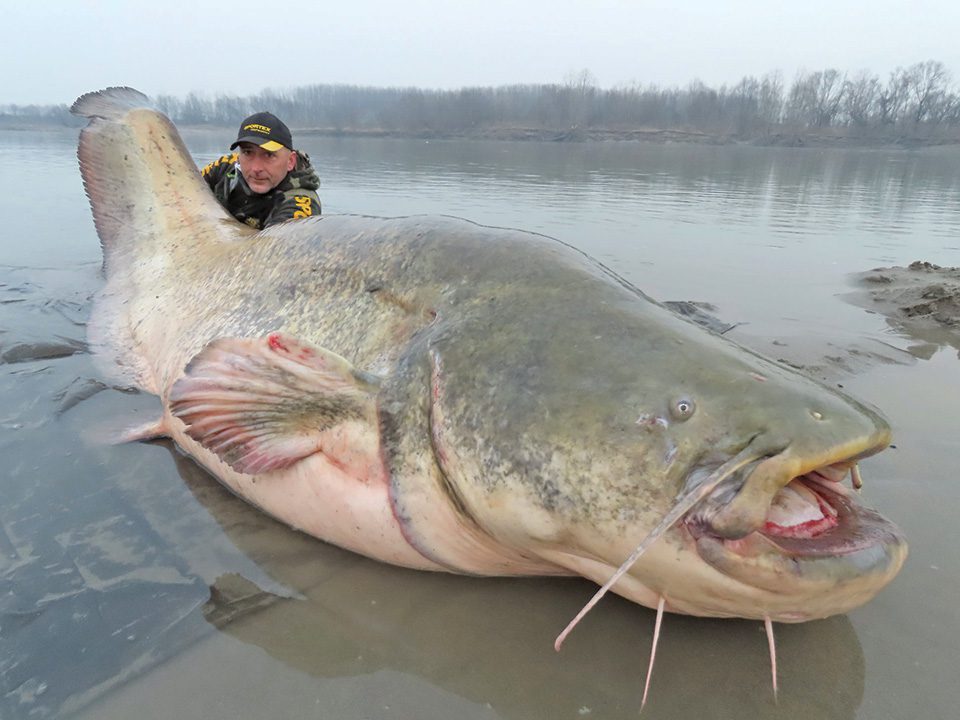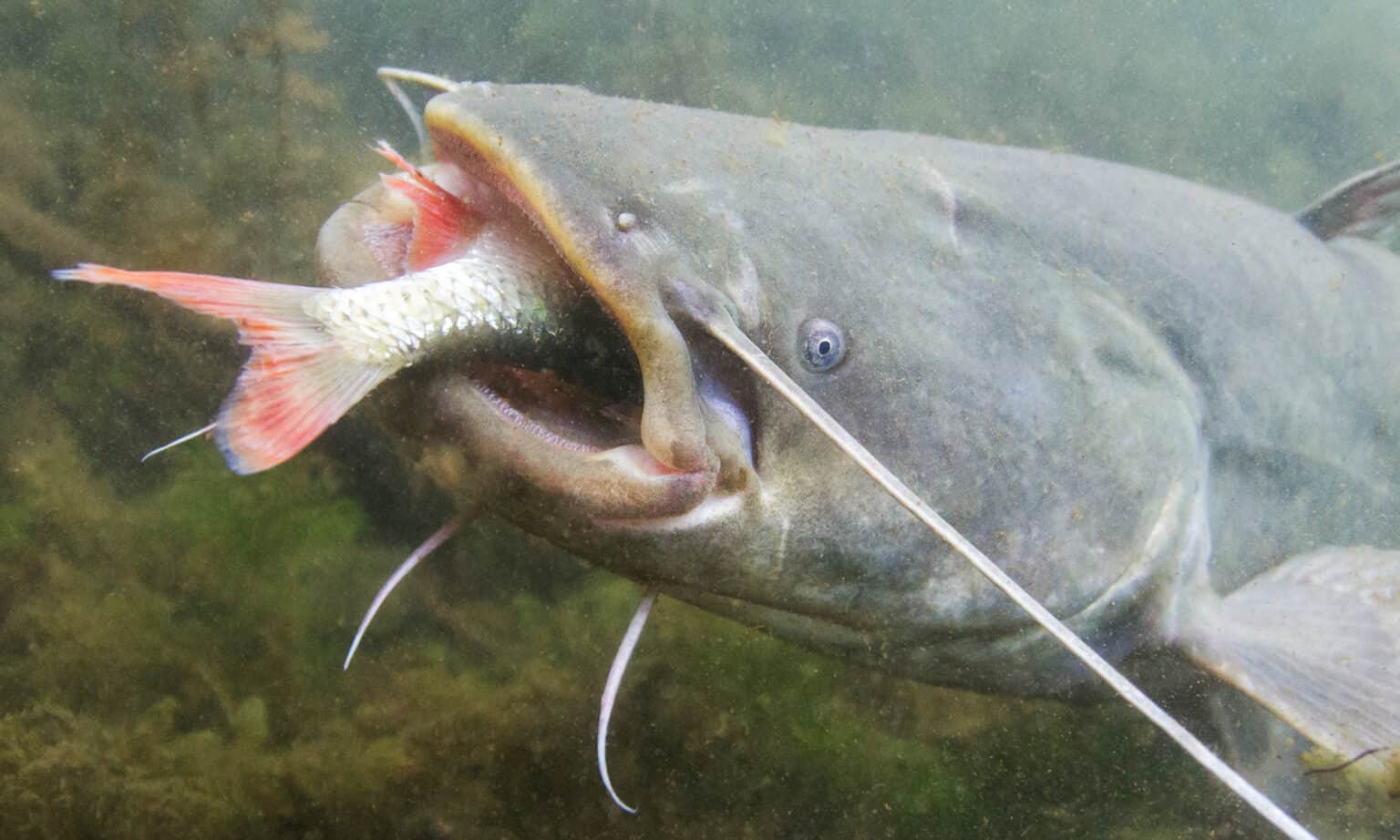Unveiling The Wels Catfish: Europe's Enigmatic Aquatic Giant
Deep within the freshwater realms of Europe and Asia lurks a creature of immense size and ancient lineage: the wels catfish. Known scientifically as *Silurus glanis*, this colossal fish is not merely a subject of wonder for anglers and naturalists alike, but also a significant component of its native ecosystems. Its impressive dimensions, mysterious habits, and unique characteristics have cemented its status as one of the most captivating freshwater species on the planet.
From its origins in the vast basins of the Baltic, Black, and Caspian Seas to its more recent introductions in various European rivers, the wels catfish embodies the wild spirit of aquatic life. This article will embark on a comprehensive journey to explore the fascinating world of the wels catfish, delving into its scientific background, physical attributes, ecological role, and its complex relationship with humans.
Table of Contents
- The Majestic Wels Catfish: An Overview
- Unraveling the Wels Catfish's Physical Prowess
- Distribution and Habitat: Where Giants Roam
- The Wels Catfish Diet: A Voracious Predator's Menu
- Reproduction and Life Cycle: Sustaining the Species
- Wels Catfish and Humans: Interaction and Impact
- Conservation Status and Invasive Species Concerns
- Angling for Giants: Tips for Wels Catfish Fishing
The Majestic Wels Catfish: An Overview
The wels catfish, or *Silurus glanis*, stands as Europe's largest freshwater fish, a title that immediately sparks curiosity and awe. This ancient species, native to a vast expanse stretching across central, southern, and eastern Europe, as well as parts of Asia, has been a silent observer of history, evolving over millennia in its aquatic domain. Its presence in European waters is deeply rooted, with its natural range encompassing the basins of the Baltic, Black, and Caspian Seas.
Scientific Classification and Origins
The scientific journey of the wels catfish began formally in 1758 when Carl Linnaeus, the father of modern taxonomy, first described it, bestowing upon it the binomial name *Silurus glanis*. This classification places it within the family Siluridae, a diverse group of freshwater fish comprising around 100 species across 12 genera, found not only in Europe and Asia but also in Africa. This family lineage underscores its ancient origins and its evolutionary success in adapting to various freshwater environments.
A Brief Evolutionary Journey
The wels catfish's evolutionary path is a testament to its resilience and adaptability. Over countless generations, this species has honed its predatory instincts and physical attributes to thrive in a variety of freshwater habitats, from slow-moving rivers to vast lakes. Its ability to grow to immense sizes and its broad diet are key indicators of its successful adaptation within complex freshwater ecosystems. The species' longevity, with some individuals living up to 80 years, further highlights its robust biological makeup, allowing it to reach impressive dimensions over a long lifespan.
Unraveling the Wels Catfish's Physical Prowess
When one speaks of the wels catfish, its sheer size is often the first characteristic that comes to mind. This is a fish that truly lives up to the moniker of "giant," pushing the boundaries of what is commonly expected from freshwater inhabitants. Beyond its bulk, however, lies a creature of unique features and formidable adaptations.
Size, Appearance, and Unique Features
The wels catfish can reach truly astounding dimensions. Records indicate individuals growing over 10 feet long (up to 4.5 meters) and weighing up to 400 pounds (up to 300 kg). While the average size encountered by anglers is typically smaller, the potential for such immense growth makes every encounter with a wels catfish an unforgettable experience. Visually, the wels is a distinctive fish. It is scaleless, giving its skin a smooth, almost leathery appearance. Its coloration is typically mottled, a mosaic of dark greens, browns, and blacks, which provides excellent camouflage against the riverbed or lake bottom. It possesses a broad, flattened head, small eyes, and a wide mouth armed with rows of tiny, crooked teeth. Two long barbels extend from its upper jaw, resembling whiskers, which are highly sensitive chemoreceptors used to detect prey in murky waters. Shorter barbels are also present on its lower jaw.
The Not-So-Sweet Side: Venomous Spines and Crooked Teeth
While the wels catfish is a marvel of nature, it also possesses features that warrant caution. Its dorsal and pectoral fins are equipped with strong, serrated spines. These spines, particularly the one on its dorsal fin, are known to be venomous. While not lethal to humans, a puncture can be incredibly painful, causing swelling, inflammation, and discomfort. This serves as a defense mechanism against predators. Furthermore, the "crooked teeth" mentioned in observations are not for tearing large chunks of flesh but rather for gripping slippery prey. The mouth, while wide, is designed for engulfing rather than biting, allowing it to swallow prey whole. Understanding these features is crucial for anyone interacting with this powerful fish, especially anglers, to avoid potential dangers.
Distribution and Habitat: Where Giants Roam
The native range of the wels catfish spans across a significant portion of the European and Asian continents. It is naturally found in the central, southern, and eastern parts of Europe, particularly in the river basins that drain into the Baltic, Black, and Caspian Seas. This includes countries like Hungary, Poland, Slovakia, and Lithuania, where it is also considered a culinary delicacy.
However, the distribution of the wels catfish has expanded beyond its native range due to human activities. In the last 25 years, it has been introduced to rivers in various new locations, including the UK, where it has established populations and is now considered the "true monster of British freshwater." Its adaptability allows it to thrive in a variety of aquatic environments, from shallow lakes to deep lakes, and across different sections of rivers, including upriver, middle river, and river mouth areas. This wide habitat tolerance is a key factor in its success, both in its native lands and in newly introduced territories. There is even concern about its potential introduction to the Great Lakes in North America, highlighting its association with human activities and the risks of invasive species.
The Wels Catfish Diet: A Voracious Predator's Menu
The wels catfish is an opportunistic and voracious predator, a characteristic that is essential for a fish that can grow to such immense sizes. Its diet is incredibly diverse, reflecting its adaptability and its position at the top of the freshwater food chain. As bottom-dwellers, wels catfish prowl the beds of rivers and lakes, using their sensitive barbels to detect vibrations and chemical cues from potential prey.
Their primary diet consists of various aquatic animals. This includes a wide array of fish species, which make up the bulk of their meals. However, their predatory nature extends beyond just fish. They are known to consume amphibians, crustaceans, and even small mammals that venture too close to the water's edge. Perhaps one of the most astonishing aspects of their diet, and a testament to their opportunistic feeding habits, is their documented consumption of birds, including pigeons, which they snatch from the surface of the water. This broad diet not only sustains their massive growth but also highlights their significant ecological role as apex predators within their ecosystems, controlling populations of other aquatic and semi-aquatic creatures.
Reproduction and Life Cycle: Sustaining the Species
The reproductive cycle of the wels catfish is a crucial aspect of its continued presence in freshwater ecosystems. Like most fish, reproduction is tied to environmental cues, primarily water temperature and day length, signaling the arrival of the spawning season. Wels catfish typically spawn in late spring to early summer when water temperatures are suitable.
During spawning, the female wels catfish lays a large number of eggs, which are then fertilized by the male. The male often guards the nest and the developing eggs until they hatch, providing a degree of parental care that is not uncommon among catfish species. The successful reproduction of the wels catfish ensures the continuation of its populations, allowing new generations to grow and contribute to the ecosystem.
In recent years, significant technological research into artificial reproduction, population genetics, and conservation problems of *Silurus glanis* has been developed. Countries like the Czech Republic and France have been at the forefront of these efforts over the past 10 years. This research is vital for managing existing populations, especially in areas where the wels catfish is a commercial fish or an invasive species, and for understanding its genetic diversity and long-term viability.
Wels Catfish and Humans: Interaction and Impact
The relationship between humans and the wels catfish is multifaceted, ranging from culinary appreciation to recreational angling and ecological concerns. This large species holds significant economic and cultural value in various parts of its range.
Commercial Value and Culinary Delicacy
*Silurus glanis* is a commercially important fish, widely consumed by humans. Its appeal lies in its boneless white flesh, which is noted for being low in fat and highly palatable. In some countries, particularly in Central and Eastern Europe such as Hungary, Poland, Slovakia, and Lithuania, its flesh and even its eggs are considered a delicacy, often featuring in traditional dishes. Beyond its culinary uses, the skin of the wels catfish is also utilized in various products, demonstrating its full commercial potential. This demand has spurred research into artificial reproduction to support aquaculture and sustainable harvesting practices.
While some juvenile specimens are occasionally available in the aquarium trade, it's crucial to understand that this species is clearly not a viable subject for the vast majority of private aquarists. Its immense growth potential means it quickly outgrows typical home aquariums, making it an unsuitable pet for all but the most specialized and dedicated facilities.
Conservation Status and Invasive Species Concerns
The conservation status of the wels catfish is a complex issue. In its native range, healthy populations generally exist, and it is a popular food and sport fish, contributing to local economies. However, its widespread introduction to non-native waters presents significant ecological challenges, leading to its classification as an invasive species in many areas.
As an invasive species, particularly in regions like the UK where it has been introduced in the last 25 years, the wels catfish poses a threat to native fish populations that are already in decline. Its large size, voracious appetite, and adaptability mean it can outcompete native species for food and habitat, and even prey upon them. This disruption of the natural food web can lead to imbalances in the ecosystem, potentially reducing biodiversity and altering the delicate ecological equilibrium. The concern about its potential introduction to the Great Lakes, for instance, highlights the global awareness of its invasion risk and the need for careful management and prevention strategies to protect vulnerable native ecosystems.
Angling for Giants: Tips for Wels Catfish Fishing
For many outdoor enthusiasts, particularly in countries like France, Italy, Spain, and the UK, the wels catfish is considered a premier sport fish. The thrill of battling a creature that can grow larger than carp and puts up a "better fight" is a powerful draw. Catfishing opportunities, especially for wels, are often overlooked in the UK, where carp fishing tends to dominate the angling scene. However, those who seek the "true monster of British freshwater" turn their attention to the mighty wels catfish.
When it comes to wels catfishing, using the right bait and lures is paramount to attracting these elusive predators. Whether you're fishing in rivers, lakes, or reservoirs, having the best bait and lures can significantly increase your chances of a successful catch. Popular choices often include large dead baits, live baits (where permitted), and various types of pellets or boilies specifically designed for catfish. Lures like large soft plastics, swimbaits, and even some types of spoons can also be effective, especially when targeting active, predatory wels. Anglers often use strong tackle, including heavy rods, robust reels, and high-breaking strain lines, to withstand the immense power of these fish. Patience, knowledge of their habitat, and understanding their feeding patterns are also key to a rewarding wels catfish angling experience.
Conclusion
The wels catfish, *Silurus glanis*, is undeniably one of the most remarkable inhabitants of freshwater ecosystems. From its ancient origins and impressive size to its role as a formidable predator and its complex interactions with human society, this "giant of the freshwater world" continues to fascinate and challenge us. While it offers exciting angling opportunities and a valued food source in its native lands, its status as an invasive species in other regions underscores the delicate balance of nature and the responsibility we bear in managing our aquatic environments.
Understanding the wels catfish is not just about appreciating a large fish; it's about gaining insight into the intricate web of life that defines our planet's freshwater habitats. We hope this deep dive into the world of the wels catfish has shed light on its unique characteristics and ecological significance. Have you ever encountered a wels catfish? Share your experiences or thoughts on this incredible species in the comments below, and don't forget to explore more of our articles on the wonders of the natural world!

Angler Catches Pending World-Record Wels Catfish | Outdoor Life

Meet The Wels Catfish - Coastal Angler & The Angler Magazine

Wels Catfish Fish Facts - Silurus glanis - A-Z Animals